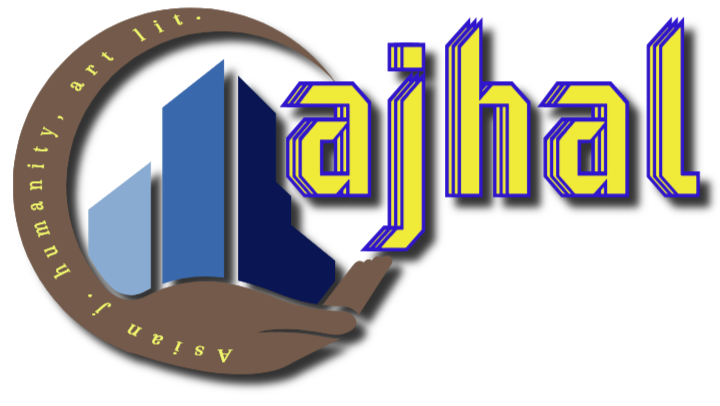A Comprehensive Study of Current and Future Trends in Cloud Forensics
DOI:
https://doi.org/10.18034/ajhal.v8i2.651Keywords:
Cloud Computing, Digital Forensics, Technology Virtualization, Storage CapacityAbstract
Organizations are increasingly turning to cloud computing, which offers convenience and provides services based on virtualization technology. Some benefits of cloud computing include accessibility, availability, flexibility, vast storage capacity, speed, flexibility, and on-demand network connectivity. Significant potential security dangers are associated with this new technology, and digital forensics cannot keep up with the rapid adoption of cloud computing solutions. This study gives an overview of cloud forensics to offer better prospects, highlighting the existing problems and difficulties. It also suggests actions that can be taken to address these difficulties.
Downloads
References
Achar, S. (2020a). Cloud and HPC Headway for Next-Generation Management of Projects and Technologies. Asian Business Review, 10(3), 187-192. https://doi.org/10.18034/abr.v10i3.637
Achar, S. (2020b). Influence of IoT Technology on Environmental Monitoring. Asia Pacific Journal of Energy and Environment, 7(2), 87-92. https://doi.org/10.18034/apjee.v7i2.649
Achar, S. (2021a). An Overview of Environmental Scalability and Security in Hybrid Cloud Infrastructure Designs. Asia Pacific Journal of Energy and Environment, 8(2), 39-46. https://doi.org/10.18034/apjee.v8i2.650
Achar, S. (2021b). Enterprise SaaS Workloads on New-Generation Infrastructure-as-Code (IaC) on Multi-Cloud Platforms. Global Disclosure of Economics and Business, 10(2), 55-74. https://doi.org/10.18034/gdeb.v10i2.652
Alex, M. E. & Kishore, R. (2017). Forensics framework for cloud computing. Computers & Electrical Engineering, 60, 193-205. https://doi.org/10.1016/j.compeleceng.2017.02.006
Dykstra, J. & Sherman, A. T. (2012). Acquiring forensic evidence from infrastructure-as-a-service cloud computing: Exploring and evaluating tools, trust, and techniques. Digital Investigation, S90—S98. https://doi.org/10.1016/j.diin.2012.05.001
Kebande, V. & Venter, H. S. (2015). A functional architecture for cloud forensic readiness large-scale potential digital evidence analysis. In Proceedings of the European Conference on Cyber Warfare and Security. Academic Conferences Int’l Limited, 373.
Kebande, V. R. & Venter, H. S. (2016). On digital forensic readiness in the cloud using a distributed agent-based solution: issues and challenges. Australian Journal of Forensic Sciences. 50(2), 209-238. https://doi.org/10.1080/00450618.2016.1194473
Kebande, V. R. & Venter, H. S. (2014). A cognitive approach for botnet detection using Artificial Immune System in the Cloud. In: 2014 Third International Conference on Cyber Security, Cyber Warfare and Digital Forensic (CyberSec). Beirut, Lebanon. IEEE. https://doi.org/10.1109/cybersec.2014.6913971
Kumar Raju, B. K. S. P. & Geethakumari, G. (2018). Advances in Intelligent Systems and Computing. Singapore: Springer Singapore. Timeline-Based Cloud Event Reconstruction Framework for Virtual Machine Artifacts, 31-42. https://doi.org/10.1007/978-981-10-3376-6_4
Lu, R., Lin, X., Liang, X., and Shen, X. S. (2010). Secure provenance: The essential of bread and butter of data forensics in cloud computing. In Proceedings of the 5th ACM Symposium on Information, Computer and Communications Security. ACM, 282–292.
Manral, B., Somani, G., Choo, K. K. R., Conti, M., & Gaur, M. S. (2019). A systematic survey on cloud forensics challenges, solutions, and future directions. ACM Computing Surveys (CSUR), 52(6), 1-38. https://doi.org/10.1145/3361216
Manral, B., Somani, G., Choo, K-K. R., Conti, M., and Gaur, M. S. (2020). A Systematic Survey on Cloud Forensics Challenges, Solutions, and Future Directions. ACM Computing Surveys, 52(6), Article 124. https://doi.org/10.1145/3361216
Patrascu, A., Patriciu, V-V. (2015). Logging for Cloud Computing Forensic Systems. International Journal of Computers Communications & Control, 10(2). https://doi.org/10.15837/ijccc.2015.2.802
Poisel, R., Tjoa, S. (2012). Discussion on the Challenges and Opportunities of Cloud Forensics. In: Quirchmayr, G., Basl, J., You, I., Xu, L., Weippl, E. (eds) Multidisciplinary Research and Practice for Information Systems. CD-ARES 2012. Lecture Notes in Computer Science, 7465. Springer, Berlin, Heidelberg. https://doi.org/10.1007/978-3-642-32498-7_45
Rane, S. & Dixit, A. (2019). Communications in Computer and Information Science. Singapore: Springer Singapore. BlockSLaaS: Blockchain Assisted Secure Logging-as-a-Service for Cloud Forensics; p. 77-88. https://doi.org/10.1007/978-981-13-7561-3_6
Ruan, K., Carthy, J., Kechadi, T., Baggili, I. (2013). Cloud forensics definitions and critical criteria for cloud forensic capability: An overview of survey results, Digital Investigation, 10(1), 34-43. https://doi.org/10.1016/j.diin.2013.02.004
Trenwith, P. M., & Venter, H. S. (2013). Digital forensic readiness in the cloud. In: 2013 Information Security for South Africa; 2013 Aug 14-16; Johannesburg, South Africa. IEEE. https://doi.org/10.1109/issa.2013.6641055
Vatsenko, A. (2020). Digital Forensics Techniques Overview. Bulletin of Science and Practice, 6(6), 167-174. https://doi.org/10.33619/2414-2948/55/21
Wang, J., Peng, F., Tian, H., Chen, W., Lu, J. (2019). Lecture Notes of the Institute for Computer Sciences, Social Informatics and Telecommunications Engineering. Cham: Springer International Publishing. Public Auditing of Log Integrity for Cloud Storage Systems via Blockchain, 378-387. https://doi.org/10.1007/978-3-030-21373-2_29
--0--















